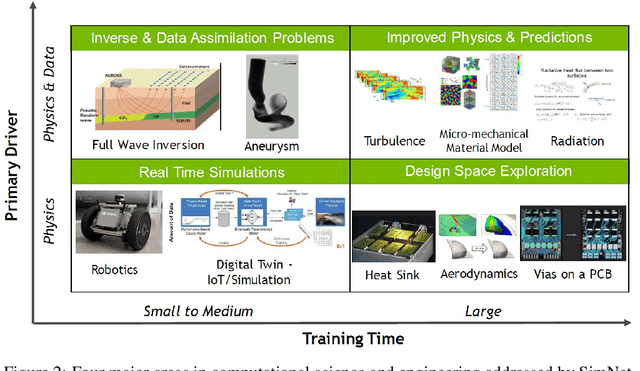Kaustubh Tangsali
A Novel A.I Enhanced Reservoir Characterization with a Combined Mixture of Experts -- NVIDIA Modulus based Physics Informed Neural Operator Forward Model
Apr 20, 2024



Abstract:We have developed an advanced workflow for reservoir characterization, effectively addressing the challenges of reservoir history matching through a novel approach. This method integrates a Physics Informed Neural Operator (PINO) as a forward model within a sophisticated Cluster Classify Regress (CCR) framework. The process is enhanced by an adaptive Regularized Ensemble Kalman Inversion (aREKI), optimized for rapid uncertainty quantification in reservoir history matching. This innovative workflow parameterizes unknown permeability and porosity fields, capturing non-Gaussian posterior measures with techniques such as a variational convolution autoencoder and the CCR. Serving as exotic priors and a supervised model, the CCR synergizes with the PINO surrogate to accurately simulate the nonlinear dynamics of Peaceman well equations. The CCR approach allows for flexibility in applying distinct machine learning algorithms across its stages. Updates to the PINO reservoir surrogate are driven by a loss function derived from supervised data, initial conditions, and residuals of governing black oil PDEs. Our integrated model, termed PINO-Res-Sim, outputs crucial parameters including pressures, saturations, and production rates for oil, water, and gas. Validated against traditional simulators through controlled experiments on synthetic reservoirs and the Norne field, the methodology showed remarkable accuracy. Additionally, the PINO-Res-Sim in the aREKI workflow efficiently recovered unknown fields with a computational speedup of 100 to 6000 times faster than conventional methods. The learning phase for PINO-Res-Sim, conducted on an NVIDIA H100, was impressively efficient, compatible with ensemble-based methods for complex computational tasks.
NVIDIA SimNet^{TM}: an AI-accelerated multi-physics simulation framework
Dec 14, 2020



Abstract:We present SimNet, an AI-driven multi-physics simulation framework, to accelerate simulations across a wide range of disciplines in science and engineering. Compared to traditional numerical solvers, SimNet addresses a wide range of use cases - coupled forward simulations without any training data, inverse and data assimilation problems. SimNet offers fast turnaround time by enabling parameterized system representation that solves for multiple configurations simultaneously, as opposed to the traditional solvers that solve for one configuration at a time. SimNet is integrated with parameterized constructive solid geometry as well as STL modules to generate point clouds. Furthermore, it is customizable with APIs that enable user extensions to geometry, physics and network architecture. It has advanced network architectures that are optimized for high-performance GPU computing, and offers scalable performance for multi-GPU and multi-Node implementation with accelerated linear algebra as well as FP32, FP64 and TF32 computations. In this paper we review the neural network solver methodology, the SimNet architecture, and the various features that are needed for effective solution of the PDEs. We present real-world use cases that range from challenging forward multi-physics simulations with turbulence and complex 3D geometries, to industrial design optimization and inverse problems that are not addressed efficiently by the traditional solvers. Extensive comparisons of SimNet results with open source and commercial solvers show good correlation.
 Add to Chrome
Add to Chrome Add to Firefox
Add to Firefox Add to Edge
Add to Edge